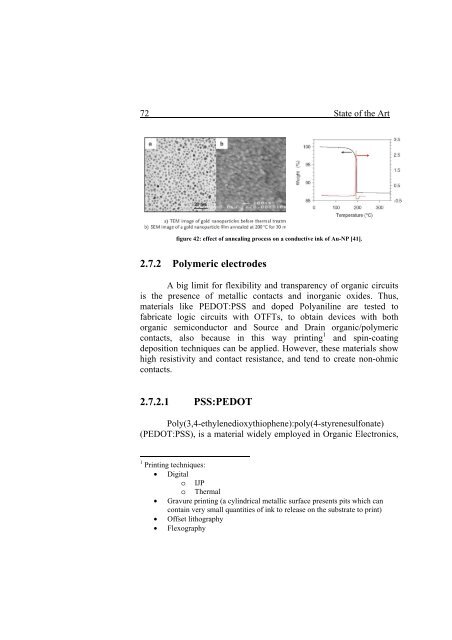tesi R. Miscioscia.pdf - EleA@UniSA
tesi R. Miscioscia.pdf - EleA@UniSA
tesi R. Miscioscia.pdf - EleA@UniSA
You also want an ePaper? Increase the reach of your titles
YUMPU automatically turns print PDFs into web optimized ePapers that Google loves.
72 State of the Art<br />
figure 42: effect of annealing process on a conductive ink of Au-NP [41].<br />
2.7.2 Polymeric electrodes<br />
A big limit for flexibility and transparency of organic circuits<br />
is the presence of metallic contacts and inorganic oxides. Thus,<br />
materials like PEDOT:PSS and doped Polyaniline are tested to<br />
fabricate logic circuits with OTFTs, to obtain devices with both<br />
organic semiconductor and Source and Drain organic/polymeric<br />
contacts, also because in this way printing 1 and spin-coating<br />
deposition techniques can be applied. However, these materials show<br />
high resistivity and contact resistance, and tend to create non-ohmic<br />
contacts.<br />
2.7.2.1 PSS:PEDOT<br />
Poly(3,4-ethylenedioxythiophene):poly(4-styrenesulfonate)<br />
(PEDOT:PSS), is a material widely employed in Organic Electronics,<br />
1 Printing techniques:<br />
• Digital<br />
o IJP<br />
o Thermal<br />
• Gravure printing (a cylindrical metallic surface presents pits which can<br />
contain very small quantities of ink to release on the substrate to print)<br />
• Offset lithography<br />
• Flexography
















